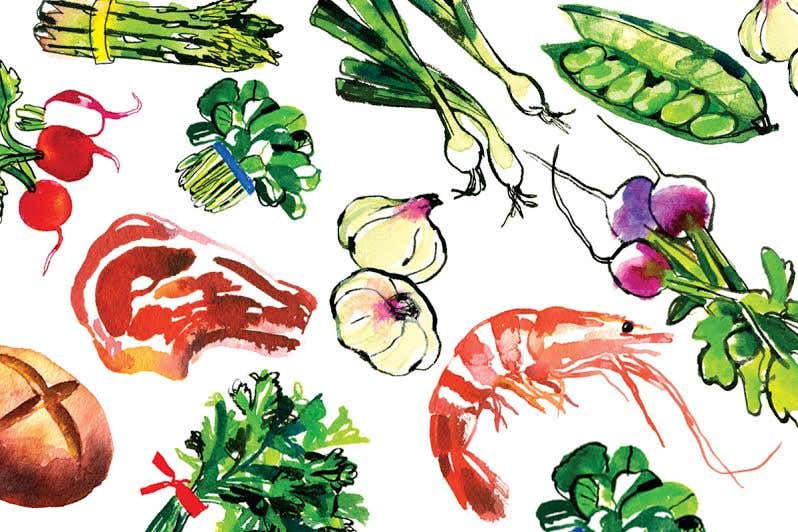
When my daughter was five years old, her code of eating (Oh, fruit flung far from the tree!) allowed her Cheerios, grilled cheese sandwiches, french fries with plenty of ketchup, and not much else, so she fairly stunned me one day by announcing that she wanted to try spareribs. Well, er, sure, I stammered in reply—but why? Because, she informed me, that's what wolves eat. I'm not sure that this is literally true. Wolves are fearsome creatures with healthy appetites, but I don't imagine they have occasion to sup too often on pig or cow—and if they were to, I doubt that they'd pay much attention to the principles of butchering that separate out the ribs from the adjacent portions of the carcass. But I can't help thinking that my daughter was on to something—that a great deal of the real pleasure so many of us derive from gnawing on blackened lamb-chop bones, crunching on charred tips of barbecued chicken wings, and scooping marrow out of osso buco veal shanks has to do with the fact that somewhere, way deep down, we know that that's more or less what wolves (or bears, or lions) do. In other words, I suspect that we like eating meat right off the bone at least partly because there's something purely animal about it—and thus something definitively, elementally human. Meat on the bone has roots.
Of course, there's a more obvious reason for eating flesh in this form: The meat nearest the bone is almost always the most savory. Bones, which form the skeletons—the structural underpinnings—of all vertebrates, are connected lengths of firm, cartilaginous tissue, rich in calciferous salts. Bones tend to be attached to muscles (so that the body parts they support can move) and muscle is usually striated with fat. To the eternal frustration of the health conscious, the plain truth is that fat, whatever it may do to your insides when you ingest it, tastes good. Mighty good. And meat bathed in fat (which liquefies when heated) is better than the naked kind.
But there's flavor in the bones themselves, too—from collagens, which melt when cooked, releasing gelatin to thicken and add complexity to stocks and sauces, and from marrow. Marrow is another sort of tissue—very soft and fatty and slightly sweet—contained in edible quantities in the larger bones of animals. Some marrow dissolves into cooking liquids, too, but that which remains inside the bone cavities can be scraped out with thin little spoons.
The flavor-lending qualities of bones are well known the world around. A French chef could not make a decent stock without them. (Vegetable stock is indecent.) Fish lovers from Chile to China scorn boned fillets if bone-in whole fish is an alternative. The great cured hams of Italy and Spain are sold with leg (and sometimes foot) attached, at least in their native countries. At a traditional Mexican barbacoa, to the dismay of squeamish onlookers, whole roasted sheeps' heads—full of tiny pockets of superbly succulent meat hiding in crevices of the big bone called the skull—are picked apart with great enthusiasm.
Some dishes practically are their bones. I've actually seen, in certain hoity-toity restaurants, oxtail served deboned—but I've always thought that the kinds of people who would go for that probably also want their watermelon seedless. If you boned out lambs' necks (one of the great meat secrets left in America today, as yet undiscovered by our trendy bistros), you'd have nothing left but scraps—but with the meat still clinging to the bone, you've got Dinner. Some perfectly legitimate recipes do call for boning veal breast (which is approximately one part bones, one part fat, and five or six parts flavor) before stuffing it, but even those usually call for the bones to be thrown into the broth in which the stuffed breast is cooked. As for lamb shanks, well, anyone who cuts the meat off these particular lengths of firm, cartilaginous tissue, rich in calciferous salts, ought to be put on a diet of, say, Cheerios, grilled cheese sandwiches, and french fries.
When my daughter finally tried spareribs, incidentally, she frankly didn't like them very much—lupine associations notwithstanding. But not long afterward, she did sit down quite contentedly to a dinner of broiled chicken legs, which she gnawed with animal abandon. "That's what foxes eat," I assured her.
Keep Reading
Continue to Next Story










